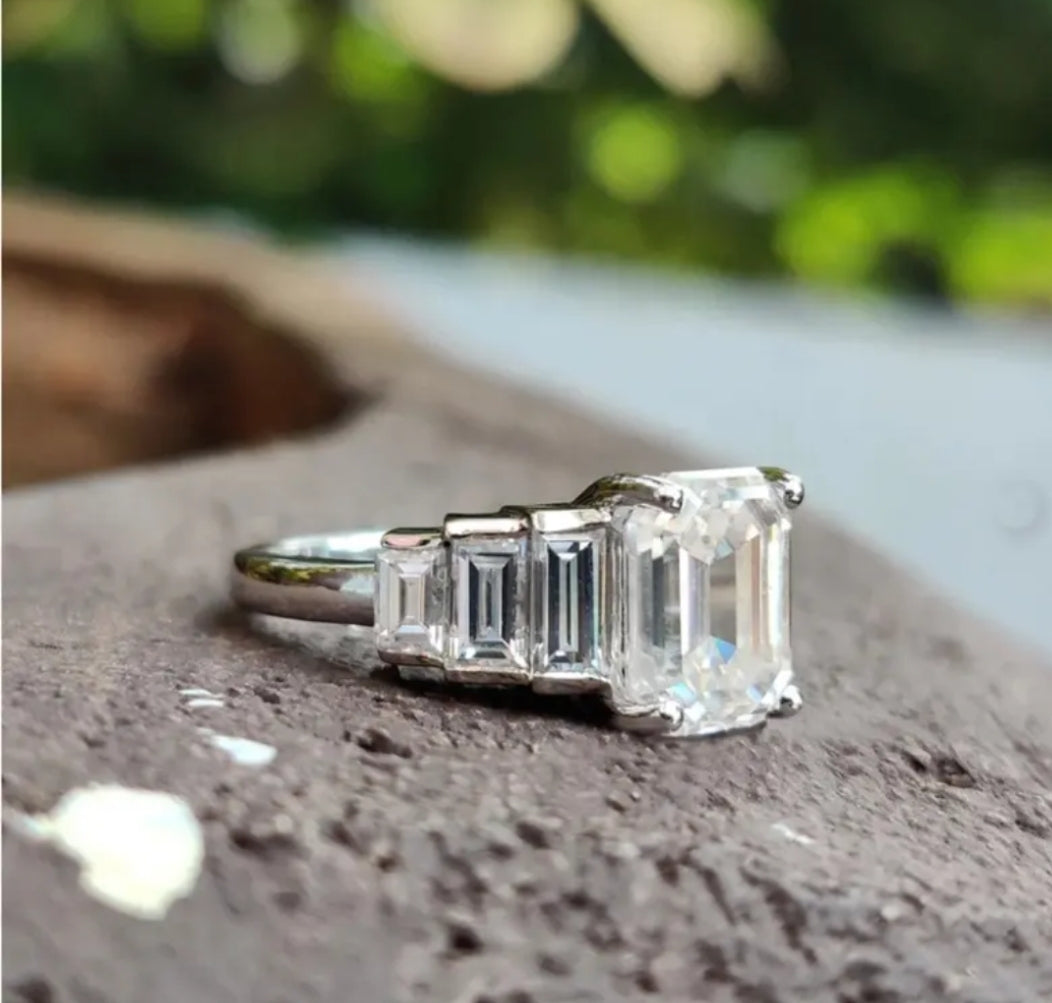
Cubic Zirconia vs Diamonds: Understanding the Key Differences
 Cubic zirconia (CZ) and diamonds are often compared due to their similar appearance, but they are quite different in terms of composition, value, and durability. Understanding these differences is essential for making informed decisions when purchasing jewelry. This article will go into detail, helping you grasp the essential differences between these popular gemstones.
Cubic zirconia (CZ) and diamonds are often compared due to their similar appearance, but they are quite different in terms of composition, value, and durability. Understanding these differences is essential for making informed decisions when purchasing jewelry. This article will go into detail, helping you grasp the essential differences between these popular gemstones.
What is Cubic Zirconia?
Composition and Creation
Cubic zirconia, often abbreviated as CZ, is a synthetic gemstone made from zirconium dioxide. Originally developed in the 1970s, CZ is created through a high-temperature process that involves melting zirconium oxide. This process yields a gem that is flawless and can mimic the appearance of diamonds closely. CZ is predominantly colorless but can be manufactured in various colors, enhancing its appeal in affordable jewelry.
Visual and Physical Properties
The brilliance of CZ is comparable to that of diamonds. However, CZ has a slightly higher dispersion rate, resulting in a more colorful sparkle. While this can be attractive, it may also lead to a less natural look compared to diamonds. On the Mohs scale of hardness, cubic zirconia scores about 8.5, making it durable yet more susceptible to scratches than diamonds, which score a perfect 10.
Understanding Diamonds
Natural Formation
Diamonds are formed naturally from carbon deep within the Earth's mantle under extreme heat and pressure over millions of years. This natural process results in unique characteristics and imperfections that contribute to each diamond's individual beauty. Unlike CZ, diamonds cannot be replicated in labs with the same chemical properties, making them highly sought after in the jewelry market.
Characteristics of Diamonds
With their extraordinary sparkle, diamonds are renowned for their brilliance. Their unparalleled hardness means that they remain beautiful over decades, making them the preferred choice for engagement rings and other fine jewelry. Diamonds also come in a variety of colors and can exhibit different levels of clarity, which greatly influences their value.
Comparing the Cost
Price Variations
The price difference between cubic zirconia and diamonds is significant. Cubic zirconia is much more affordable, typically costing only a fraction of the price of a diamond. A one-carat CZ stone can be priced at around $20, while a similar diamond can start at $1,800, depending on factors like carat weight, color, and clarity.
Market Trends
While cubic zirconia offers an attractive option for those on a budget, diamonds hold their value much better over time. The market for diamonds is continually growing, with an increased demand for both natural and lab-grown diamonds. In contrast, the market for cubic zirconia has seen fluctuations and is generally perceived as a less valuable alternative.
Durability Comparison
Cubic Zirconia Durability
Although CZ is quite resilient, its score of 8.5 on the Mohs scale signifies that it is apt to become cloudy and scratched after prolonged use. This susceptibility may lead consumers to need replacements sooner, especially for daily wear items like rings.
Diamond Durability
The diamond, rated 10 on the Mohs scale, is the hardest known natural material, making it exceptionally resistant to scratches and damage. This unique durability is why diamonds are often seen as lifetime investments in jewelry.
Practical Uses in Jewelry
Jewelry Applications of CZ
Cubic zirconia is commonly used in fashion jewelry due to its affordability and versatility. It is seen in various styles, including necklaces, bracelets, and earrings. Designs that utilize CZ allow for vibrant colors and intricate designs without the hefty price tag that natural gemstones carry.
Diamonds in High-End Jewelry
Diamonds are typically reserved for luxury jewelry pieces, engagement rings, and items intended for long-term investment. Their timeless beauty and unmatched durability make them a favored choice among consumers looking for something special.
Conclusion
In summary, both cubic zirconia and diamonds have unique attributes that cater to different personal preferences and pricing considerations. While cubic zirconia is an affordable diamond alternative with a similar appearance, it lacks the durability and intrinsic value of genuine diamonds. Consumers should carefully evaluate their specific needs and budget when deciding between these two stones. Whether you choose a stunning Cubic Zirconia Tennis Bracelet, or invest in a timeless diamond piece, your choice should reflect your personal style and the significance of the occasion.
Frequently Asked Questions (FAQ)
1. How can I tell the difference between cubic zirconia and a diamond?
One way to distinguish the two is through their prices; diamonds will always be more expensive than cubic zirconia. Additionally, examining the gemstones under light can reveal differences in sparkle; diamonds exhibit more brilliance, while cubic zirconia tends to display rainbow-colored reflections.
2. Is cubic zirconia a good substitute for diamonds?
Cubic zirconia is an excellent substitute for those on a budget who desire the look of diamond jewelry without the expense. However, it may not hold up in durability and longevity as well as a diamond would.
3. What is more valuable, cubic zirconia or diamonds?
Diamonds are significantly more valuable than cubic zirconia. While cubic zirconia is an affordable alternative, diamonds hold their value over time, making them a better long-term investment.
